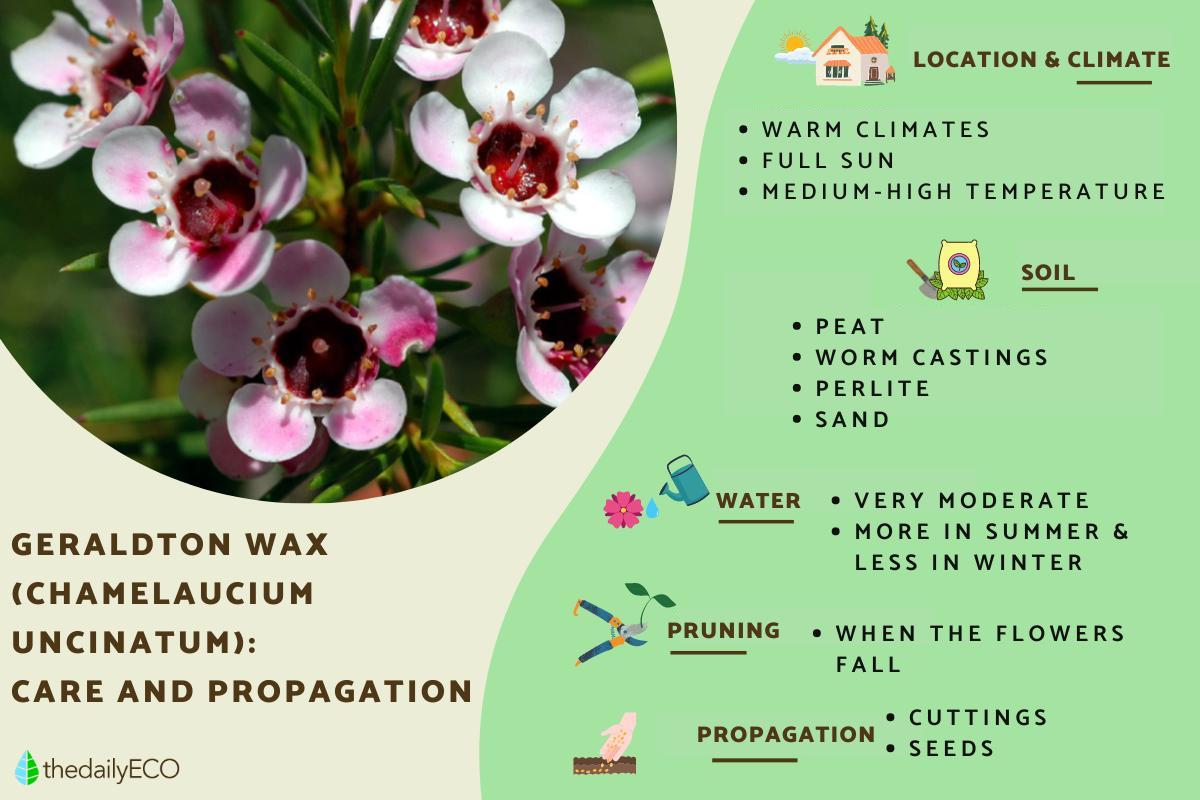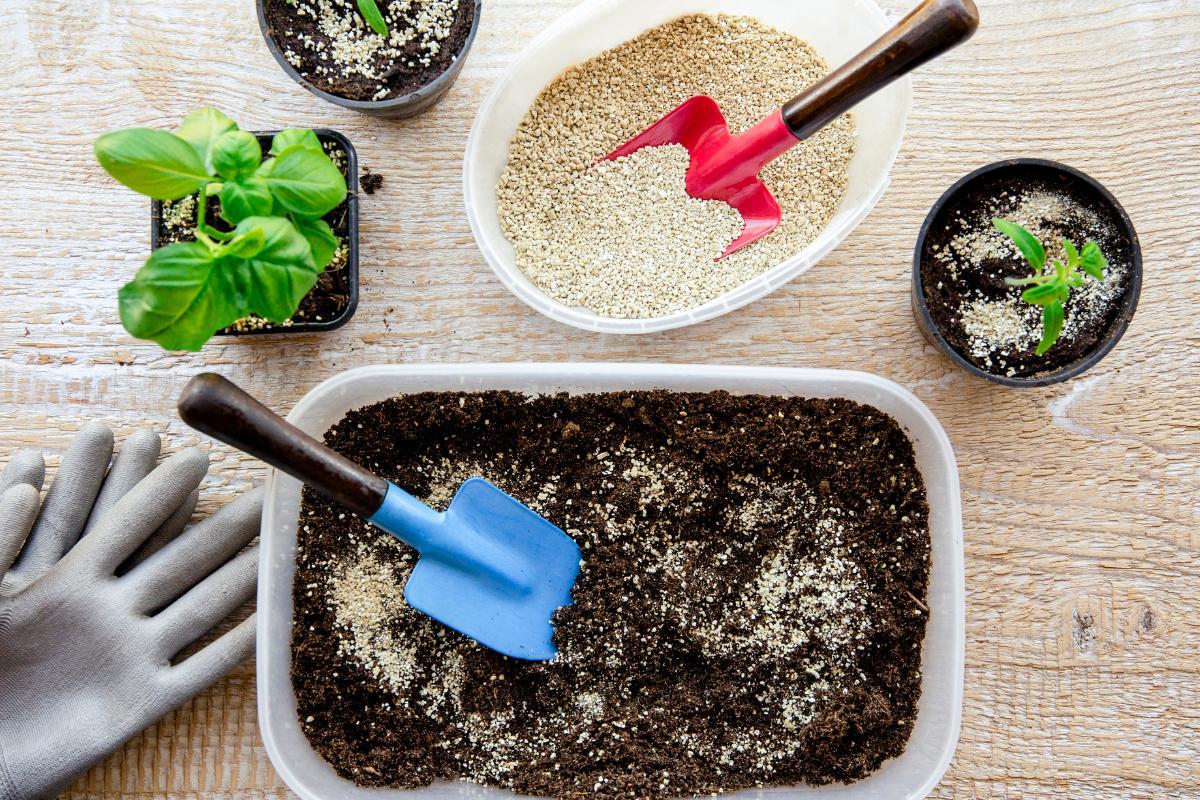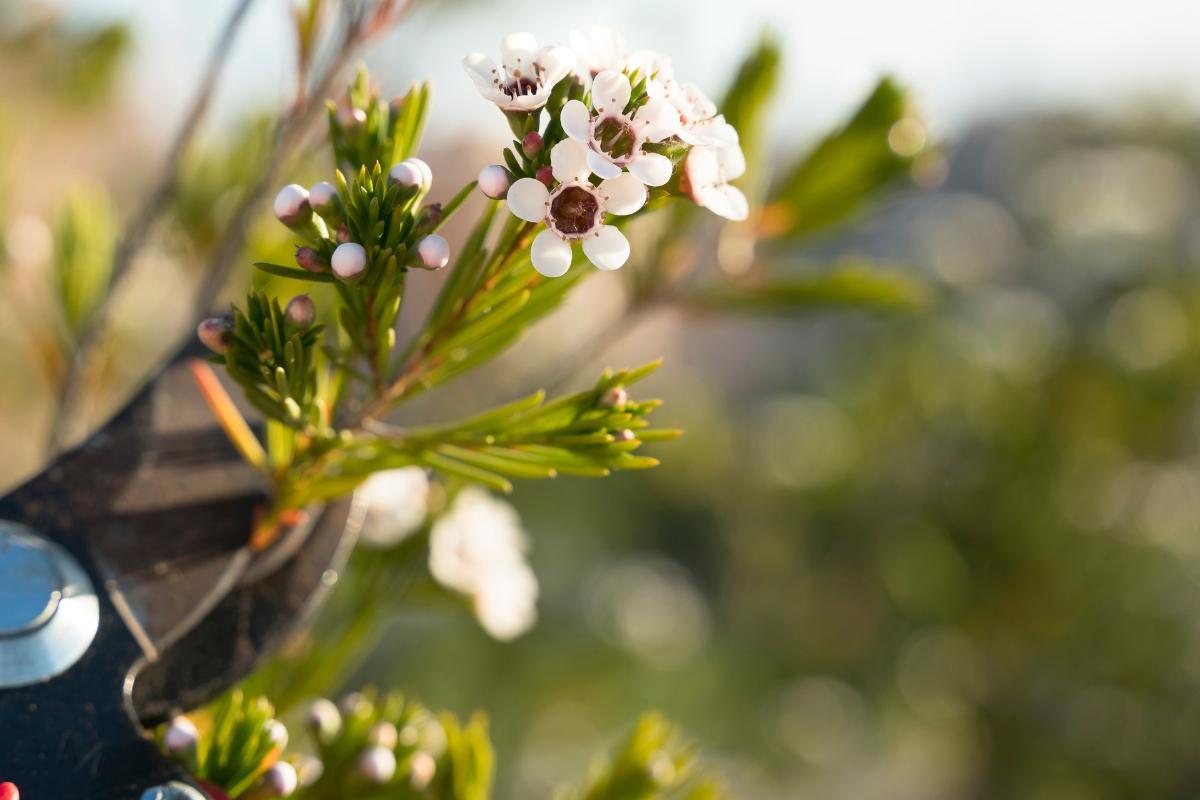Geraldton Wax Plant Care and Propagation


Also known as Geraldton waxflower, the Geraldton wax (Chamelaucium uncinatum) is a flowering plant from Australia which is growing in popularity among professional horticulturists and amateur gardeners alike. It has different varieties with their own colors of flowers, ranging from white to pink, with several shades in between. Being from Australia, it should be no surprise this plant thrives in sunny areas. We need to be very careful with soil and watering since it can have problems in areas with higher humidity. To learn more, thedailyECO provides everything you need to know about Geraldton wax plant care and propagation.
Characteristics of Geraldton wax
Before we look at the specifics of its care, we can find out some general characteristics of Chamelaucium uncinatum. The Geraldton wax plant:
- Is also known as silk flower, wax flower or wax tree.
- Is an evergreen shrub that reaches about 20" (50 cm) in height.
- Is part of the Myrtaceae family, meaning it is related to myrtle plants.
- Contains aromatic oil that gives off a lemon aroma.
- Has abundant leaves that are peak-shaped.
- Has foliage is very resistant and the flower is also very resistant compared to most others.
- Is a plant that is very tolerant to environmental conditions. It responds well to both pests and problems such as drought or lack of sun. Only extreme cold damages it severely.
- Has simple flowers with five petals that are usually pink or white. They have 10 stamens and are steely in appearance. They bloom from February to June.
- Has adapted well to dry, hot or sunny climates.
- Is one of the plants that requires the least care. As it is a little rustic, it is easy for it to grow on its own without much intervention from the gardener.
Discover more plants with similar blooms with our article on purple flowering plants for your garden.

Light, temperature and location for Geraldton wax plants
The Geraldton waxflower can be planted either in a flowerbed or its own pot. It requires a lot of direct sun, so it should be placed accordingly. Equally, it needs to be planted in areas with a warm to hot ambient temperature. If your local climate does not allow for this, it will need to be kept as a houseplant. It may be that you can keep it outside in the summer, but you will need to bring it inside once the temperature drops.
Learn more about different low-maintenance plants for full-sun gardens.
Geraldton wax soil and fertilizer
Whether in a flowerbed or pot, Geraldton wax needs moderate watering and great drainage. This is important as waterlogging can seriously damage the plant. It fares best in sandy soil, but it still needs to be fertile. A good substrate for Geraldton wax is a base mixture of equal parts peat and worm castings. A handful of sand and perlite needs to be added. It is good practice to first put a handful of sandy clay in the bottom of the pot as this can help provide extra protection during rainy seasons.
The fertilizer foe Geraldton wax depends on each type of soil. Generally speaking, it benefits from manure, shredded pine bark and some chelated iron. However, you will need to check the pH before adding the latter.
Check out how to make your own worm castings at home with our related guide.

Watering Geraldton wax plants
As we have already stated, the Geraldton wax needs only moderate watering. It can even tolerate long periods of drought due to its resistant nature. The soil should never be allowed to become waterlogged, but you may need to increase watering a little during the summer months. In winter, it should be minimal. Before each watering, ensure you let the soil dry out so that at least the top 2 inches are dry.
Pruning Geraldton wax plants
You have to wait for flowering to start pruning. It can be pruned when the flowers have fallen. You can begin to cut the tenderest edges of its branches, but you should not prune its stems as they will weaken. It does not have to be pruned completely, but it should be left with a light foliage of leaves.
Learn more about caring for damaged plants with our article explaining how to bring a poinsettia back to life.
Geraldton wax propagation
If you want to reproduce your Chamelaucium uncinatum plant, there are two main methods of propagation:
- Cuttings: this is the simplest and fastest method for Geraldton wax propagation. The cuttings can be made directly from the plant, close to the nodes and measuring about 8-10" (20-25 cm) in length. The leaves are removed so the new plant does not waste energy on them. At least a third of the cutting is planted in a substrate rich in nutrients such as peat or compost. This new plantation should not be in direct sun until it has established firm roots. Meanwhile, it must be placed in a shady area, and keep the surface moist until we see that it has begun to sprout new shoots. Then you will have transplanted into firm soil or a pot.
- Seeds: plant the seeds in a pot with nutrient rich soil as explained above. Provide sufficient water and plenty of sun.

Common problems in Geraldton wax plants
As with all plants, Geraldton wax plants are prone to certain health issues. They include the following:
Powdery mildew
It can be diagnosed when we see that there is a white powder on the leaves. In this case, the application of sulfur-based fungicides or those containing potassium bicarbonate are often used.
Yellow leaves
This is due to iron chlorosis which shows a lack of iron. Iron chelates must be added to the soil in the form of fertilizer. You can learn about how this problem is treated in other plants with our article on why my monstera leaves are turning yellow.
Alternaria fungal infection
Due to fungi from the genus Alternaria, it occurs at the beginning of autumn. It causes defoliation of the plant, meaning its leaves will fall off. The use of Maneb or Chlortalonil is recommended.
Dry leaves
If you wonder why your Chamelaucium uncinatum dries up, it is probably due to lack of water. It is advisable to apply more water to the soil and some more sprayed on the exposed parts of the plant. It can also indicate lack of sun, so you will need to be careful.
Green aphids
These pests take over the buds of the plant and the most tender leaves. The application of Endosulfan is usually useful to eliminate this pest.
Empoasca
These leafhopper pests arrive in the summer, damaging young leaves. It is suggested to treat with pyrethrins, which are natural compounds that function as insecticides, such as those provided by certain chrysanthemum flowers.
Dying flowers
If the flowers are not lasting long, or look droopy and bent, it may be the cause of waterlogging. To avoid waterlogging in pots, it is recommended to put a plate under them. This way they collect the excess water and remove it after a few minutes of watering. If it is in a flowerbed, it is advisable to plow the soil around the plant and add a lighter substrate that allows good drainage.
Learn about caring for other flowering plants with our guide to caring for a portulaca plant and caring for a balsam flower plant.
If you want to read similar articles to Geraldton Wax Plant Care and Propagation, we recommend you visit our Plant care and cultivation category.
- Australian Native Plants: The Kings Park Experience. (2013). Australia: CSIRO PUBLISHING.








